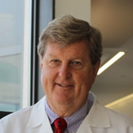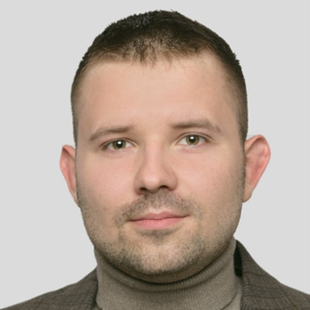Interview With Peter F. Lawrence, MD

Peter F. Lawrence, MD
Peter F. Lawrence, MD, is the Wiley Barker Professor and Chief of Vascular and Endovascular Surgery at the University of California, Los Angeles (UCLA), and also directs the Gonda Vascular Center. After graduating from Dartmouth College and Harvard Medical School, he completed his surgical residency at Columbia-Presbyterian Medical Center. He held top surgical positions at the University of Utah and University of California, Irvine before joining UCLA in 2003. He's known for his focus on aneurysms, limb salvage and venous disease.
As a former college football player, what influenced your decision to shift away from sports and pursue a medical career?
Sports, especially football, played a significant role in shaping my personality during high school and college. I realized that success in football relies on factors like speed and size, and fortunately, I had both. Offers from several colleges came my way and I chose Dartmouth College. Throughout my athletic journey, I experienced injuries to my ankles, neck, shoulder and back, which introduced me to orthopedic surgeons. Witnessing their inspiring role in helping athletes return to their game led me to shift my interest from being a career football player to pursuing medicine. During a rotation at Peter Bent Brigham Hospital (now Brigham and Women's Hospital), I became drawn to vascular surgery. I pursued a general surgery residency knowing it could open doors to various subspecialties, including vascular surgery. Vascular surgery is an exciting and technically demanding field, providing satisfaction in caring for patients who greatly benefit from our work. The broad nature of the field has kept my interest alive throughout my career.
What is your opinion on the trend of integrated specializations in vascular surgery compared to the traditional approach? Do these new programs enhance vascular surgeons' training?
Surgical training has evolved since I completed my residency. Initially, I pursued general surgery training followed by an informal fellowship in vascular surgery. Later, this fellowship became more formal, requiring completion of general surgery training first. However, a new model has emerged – an integrated training program allowing graduates to enter vascular surgery training directly after medical school. Each model has its merits. For students constrained by financial concerns, limited time or personal pressures, going straight into vascular surgery after medical school is the most efficient path. However, some individuals may begin with general surgery and discover a passion for vascular surgery later in their training. Requiring them to restart training from medical school seems unfair. In such cases, a two-year specialized vascular surgery fellowship after general surgery residency is more appropriate. It's important to note that many general surgery students undertake two years of research. Considering the duration of general surgery, research and vascular surgery training, some trainees may be 35 to 36 years old upon completion. For those without time constraints, the traditional path of general surgery followed by a fellowship remains valid. However, for those eager to specialize early on, direct entry into vascular surgery after medical school offers concentrated surgical learning compared to dividing time between general and vascular surgery.
What qualities do you seek in a vascular surgery resident as Chief of Surgery? Is there a typical set of characteristics you look for in potential candidates?
We have general standards, but each interviewer also has unique criteria they consider vital. Ethical conduct and a strong work ethic are foundational prerequisites in my view. Effective communication skills are essential too, including the ability to engage with patients, colleagues and other physicians. Assessing individual potential can be challenging. I've encountered individuals who surpassed my initial expectations; much like a high-performance car. Ideally, I seek candidates "driving" at about 60 miles per hour – making good progress with room to speed up. I avoid those going too slow, lacking motivation or those already going full throttle, suggesting a limited capacity for improvement. I seek someone who maintain a good pace and has the potential to accelerate as they advance to the next level of their training.

This article was authored by Luka Mitar, a medical student at School of Medicine University of Zagreb, in Zagreb, Croatia, and a member of ACC's Medical Student Section. Twitter: @LukaMitar2.
This content was developed independently from the content developed for ACC.org. This content was not reviewed by the American College of Cardiology (ACC) for medical accuracy and the content is provided on an "as is" basis. Inclusion on ACC.org does not constitute a guarantee or endorsement by the ACC and ACC makes no warranty that the content is accurate, complete or error-free. The content is not a substitute for personalized medical advice and is not intended to be used as the sole basis for making individualized medical or health-related decisions. Statements or opinions expressed in this content reflect the views of the authors and do not reflect the official policy of ACC.
